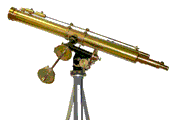Department of Physics and Astronomy: Publications and Other Research
Date of this Version
1963
Abstract
Differential cross sections for ejection of secondary electrons of various energies at various angles were measured for hydrogen gas bombarded by 100-keV protons and for helium gas bombarded by 50-, l00-, and 150-keV protons. The range of angles investigated was 10° to 160° and the range of electron energies was 1 to 500 eV. A unique fixed-port, double-walled scattering chamber was used. Electrons were counted by an electron multiplier after passing through a 127° electrostatic analyzer. The efficiency of the detector was determined by replacing the analyzer and multiplier by a Faraday cup and making absolute measurements of cross sections differential only in angle. Comparison with the integral of the differential cross sections over all electron energies gave a value of about 78% for the efficiency. As a function of electron energy the cross sections decrease monotonically above about 2.5 eV and are uncertain below this value. All cross sections decrease monotonically with an increase in angle but are relatively constant above about 110°. The differential cross sections have been integrated in various ways to obtain distributions over electron energy and angle, total cross sections for ionization, average energies of the ejected electrons, and the stopping cross sections due to ionization. Comparisons are made with other experimental results and with theoretical treatments by the Born approximation and the Gryzinski classical theory.


Comments
Published in Physical Revew Volume 131, Number 2, 15 July 1963. Copyright © American Physical Society; used by permission.